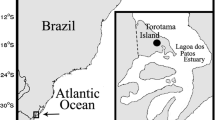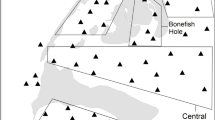Abstract
Dry salt marshes of the Rift Valley in Israel are subject 1to development. This is of special concern because the peace process has led to a boom of financial investment and a flood of ideas as to how these areas can be further exploited. This includes Eilat, an important migratory bottleneck on the northern edge of the Saharan-Arabian desert belt, which is critical for many avian migrant species because in spring it is reached after a flight of almost 2000 km across continuos deserts. Of the once extensive Eilat salt marsh of 12 km2, all that remains today is a piece of only 0.04 km2. An avian study of this habitat concluded that the salt marsh was important for the survival of at least 70 species of migrant passerines that staged in the salt marsh. In order to evaluate the optimality of the salt marsh and reed beds for the birds I sampled a resident species as a bioindicator. I hypothesized that ptilochronology would allow me to compare between the habitats and to rank their relative importance to avian populations. During autumn 1993 and spring 1994, 59 Graceful Warblers from territories in the reeds, and 41 from the salt marsh were trapped and a central rectrix plucked for analysis. The average of 10 growth bars of the rectrix of the birds from the reeds were significantly broader than those of the salt marsh. A comparison of the two habitats clearly shows that the reed beds are a superior resource to the birds than the existing salt marsh.
Zusammenfassung
Salzsümpfe im Riftvalley Israels sind von Erschließung bedroht, insbesondere seit der Frieden mit Jordanien zu einem Boom für Investitionen und Entwicklungsplänen geführt hat. Diese Entwicklung betrifft auch Eilat, einen wichtigen „Flaschenhals“ für den Vogelzug am Nordrand des nordafrikanisch-arabischen Wüstengürtels. Das Gebiet hat für Zugvögel eine entscheidende Bedeutung nach einem Flug Über fast 2000 km Wüste. Von einer Salzsumpffläche von 12 km2 sind gerade noch 0,04 km2 übrig geblieben. Die Salzsümpfe waren für mindestens 70 Zugvogelarten von essentieller Bedeutung als Rastplatz. Um die Rolle der Salzsümpfe und der Rohrbestände für Vögel zu dokumentieren, untersuchte ich einen dort lebenden Standvogel als „Bioindikator“. Im Vergleich zwischen verschiedenen Habitaten sollte die Untersuchung des Federwachstums eine Bewertung erlauben. Im Herbst 1993 und Frühjahr 1994 wurden 59 Streifenprinien aus Revieren in Rohrbeständen und 41 aus solchen in Salzsümpfen gefangen; zur Untersuchung wurde eine zentrale Steuerfeder verwendet. Im Mittel waren 10 Wachstumsstreifen der Vögel der Rohrbestände signifikant breiter als bei den Fänglingen der Salzsümpfe. Daraus ist zu schließen, daß die Rohrbestände für die Vögel ein günstigeres Habitat darstellten als die Salzsümpfe.
Similar content being viewed by others
Literature
Cramp, S. (1992): Handbook of the birds of Europe, the Middle East, and North Africa. Vol. 6., Oxford.
Grubb, T. C. Jr. (1989): Ptilochronology: feather growth bars as indicators of nutritional status. Auk 106: 314–320.
Ditto (1991): A deficient diet narrows growth bars on induced feathers. Auk 108: 725–7.
Ditto (1992): Ptilochronology: a consideration of some empirical results and ‘assumptions’. Auk 109: 673–676.
Ditto &D. A. Cimprich (1990): Supplementary food improves the nutritional condition of wintering woodland birds: evidence from ptilochronology. Ornis Scand. 21: 277–281.
Ditto &R. Yosef (1994): Habitat-specific nutritional condition in Loggerhead Shrikes (Lanius ludovicianus): evidence from ptilochronology. Auk 111: 756–759.
King, J. R., &M. E. Murphy (1984): Fault bars in the feathers of White-crowned Sparrows: dietary deficiency or stress of captivity and handling? Auk 101: 168–169.
Murphy, M. E. (1992): Ptilochronology: accuracy and reliability of the technique. Auk 109: 676–680.
Ditto &J. R. King (1991): Ptilochronology: a critical evaluation of assumptions and utility. Auk 108: 695–704.
Newton, I. (1968): The temperatures, weights, and body compositions of moulting Bullfinches. Condor 70: 323–332.
Paz, U. (1978): Population dynamics of Graceful Warbler and the significance of clutchsize in Passeriformes. Ph. D. diss, Tel Aviv Univ., Israel.
Ditto (1987): The birds of Israel. Min. Defence Publ. House, Tel Aviv.
Safriel, U. (1968): Bird migration at Eilat, Israel. Ibis 110: 283–320.
Shirihai, H., &D. A. Christie (1992): Raptor migration at Eilat. Brit. Birds 85: 141–186.
Waisel, Y. (1984): Encyclopedia of plants and animals of the Land of Israel. Vol. 8. Vegetation of Israel. Ministry of Defense Publ., Tel Aviv.
Waite, T. A. (1990): Effects of caching supplemental food on induced feather regeneration in wintering Gray JaysPerisoreus canadensis: a ptilochronology study. Ornis Scand. 21: 122–128.
White, D. W., &E. D. Kennedy (1992): Growth of induced feathers in photostimulated American Tree Sparrows. Condor 94: 543–545.
Yosef, R. (1995): Spring 1994 raptor migration at Eilat, Israel. J. Raptor Res. 29: 127–134.
Author information
Authors and Affiliations
Rights and permissions
About this article
Cite this article
Yosef, R. On habitat-specific nutritional condition in Graceful WarblersPrinia gracilis: Evidence from ptilochronology. J Ornithol 138, 309–313 (1997). https://doi.org/10.1007/BF01651556
Published:
Issue Date:
DOI: https://doi.org/10.1007/BF01651556




